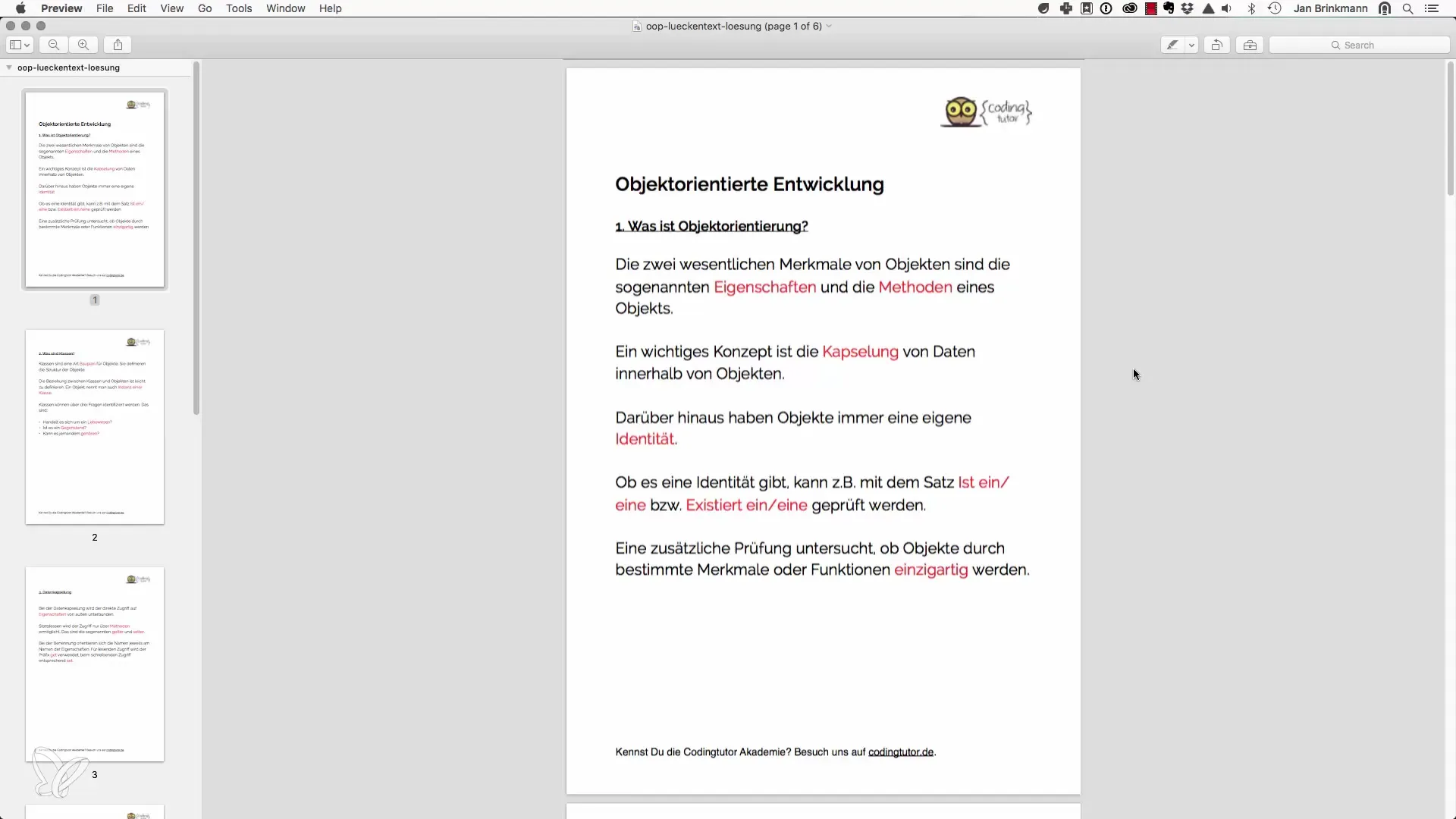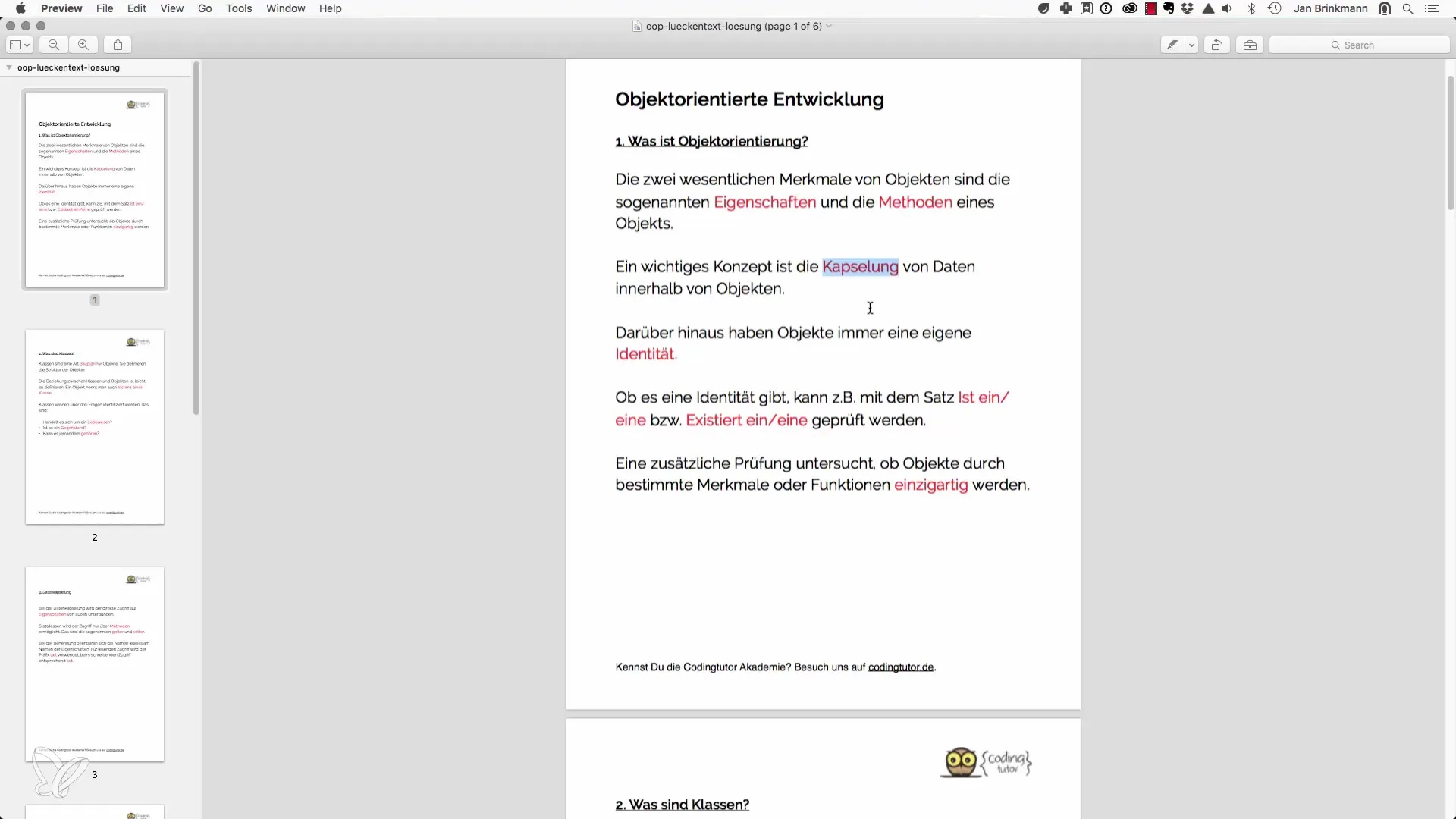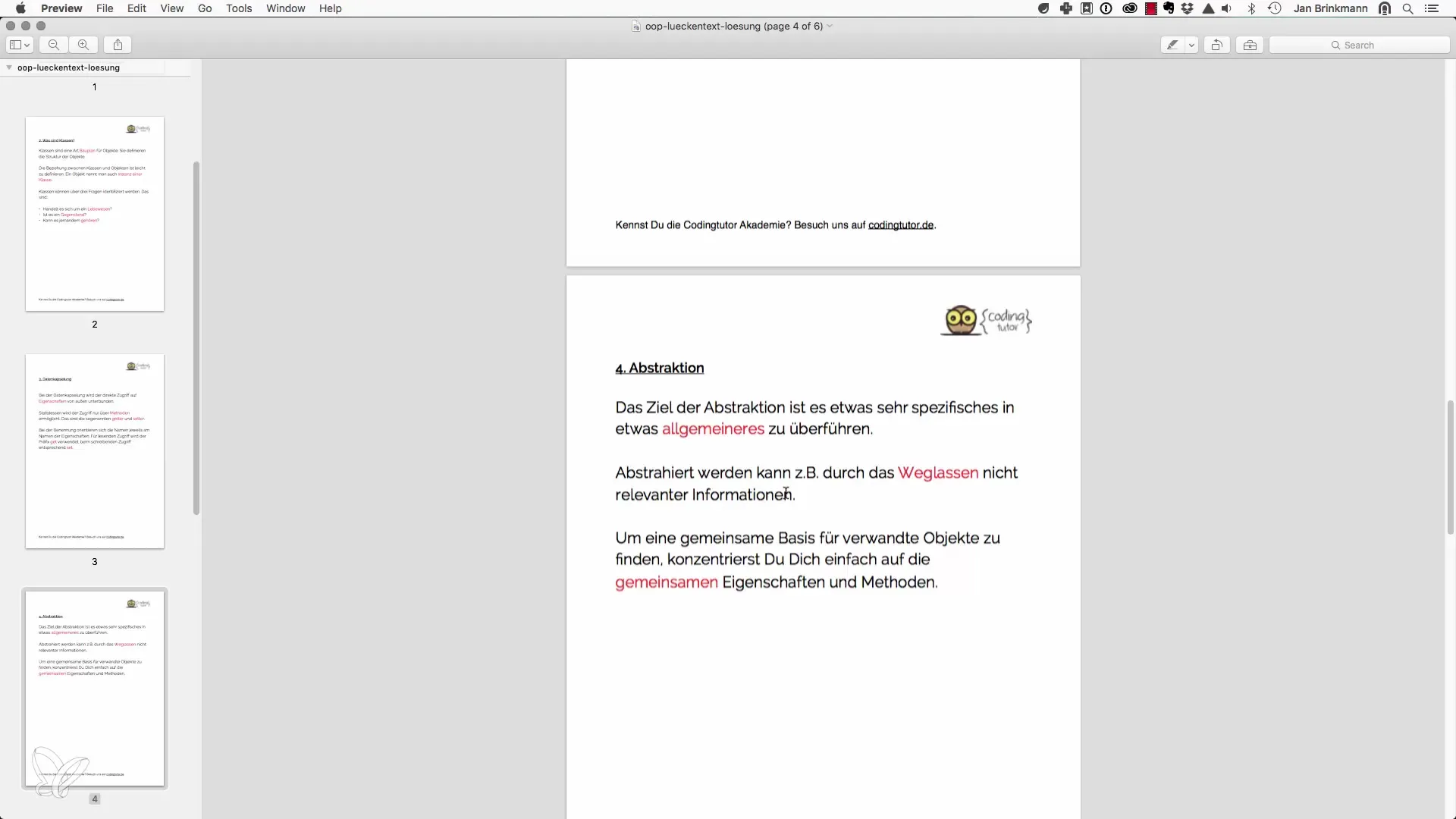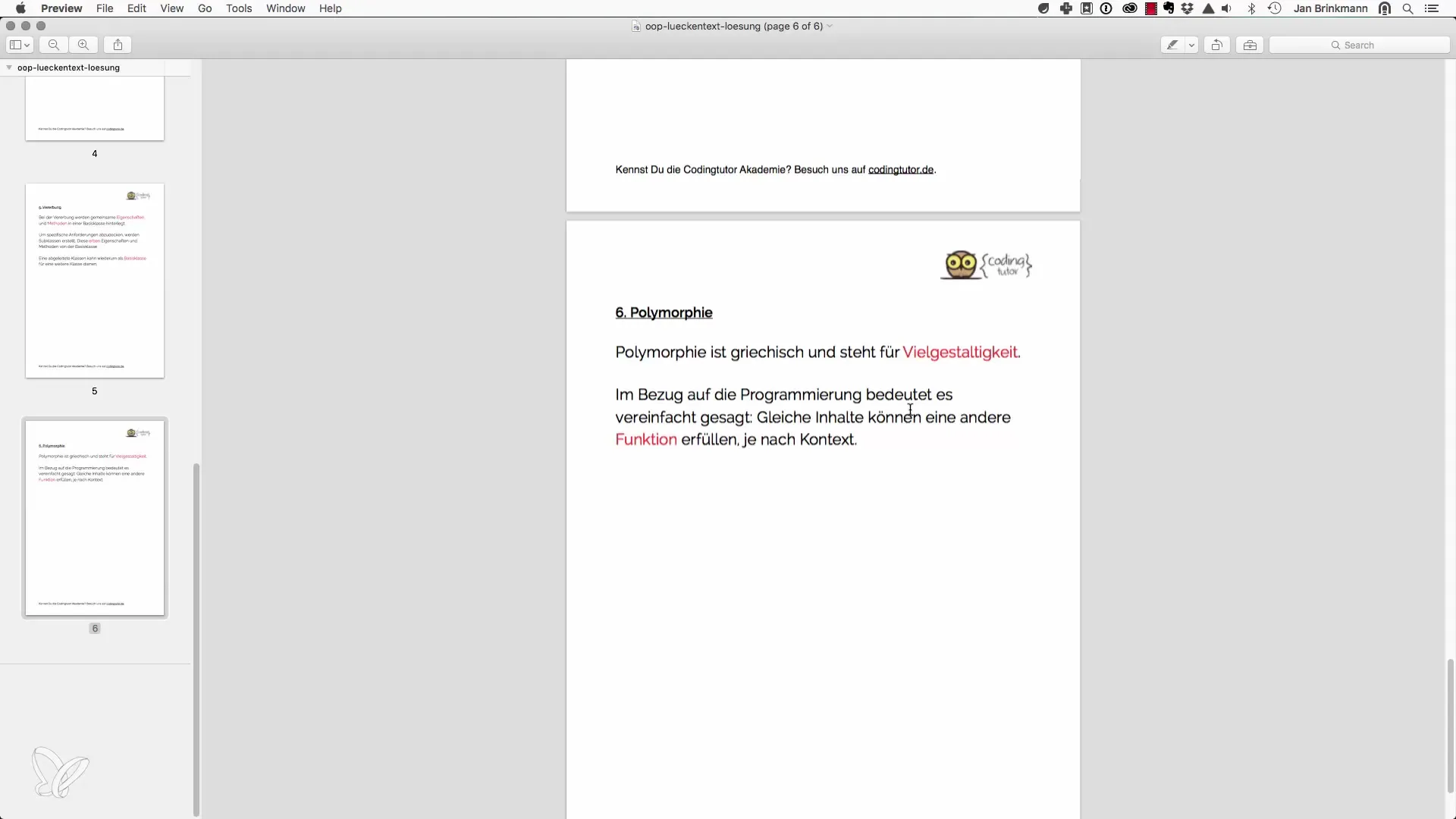If you have already learned the basics of object-oriented programming (OOP) in PHP, an exciting part lies ahead. In this section, we will review your knowledge together – specifically based on the filled-in gaps. You will gain a better understanding of both the theoretical concepts and their practical application. Let's dive straight into the world of objects, classes, and their characteristics.
Key Insights
Object-oriented programming is based on essential concepts such as encapsulation, inheritance, and polymorphism. These fundamentals are crucial for effectively working with objects in PHP.
Step-by-Step Guide
1. Data Encapsulation
Start with the basic concept of encapsulation. Encapsulation protects the data of an object by restricting direct access to its properties. For this, we use methods that act as an interface. You can implement this with getter and setter methods. An example could be getName() for accessing the name and setName() for changing that value. These methods allow controlled access to the properties of the object.

2. Identity of Objects
In order to talk about an object, it needs an identity. Objects are created through class definitions and instantiation, which are both unique and reusable. Make sure to choose clear and precise object identifiers when instantiating a class. This is a central requirement to ensure the clarity of your code.
3. Classes and Instances
Class definitions are the blueprint of your objects. A class describes the properties and methods that an object can have. You can use the terms class and instance of the class to characterize the structure and the objects that are based on it. When modeling a living being like a dog, the dog is an instance of the class "Animal", which represents a common superclass.

4. Getter and Setter Methods
To ensure clean encapsulation of data, the implementation of getter and setter methods is essential. Getters typically use the prefix "get" – such as getName() to retrieve the name of the object. The counterpart, the setters, you use with the prefix "set", like in setName(), to set an object's name.

5. Abstraction
The concept of abstraction allows you to bundle specific properties in a general class. Use abstraction to generalize specific animals like cows and chickens, defining only their common characteristics. This approach simplifies software design, as it reduces redundant information stored regarding different species of animals.

6. Inheritance
Inheritance is another central concept of OOP. It allows you to define shared properties and methods in a base class that can then be inherited by subclasses. For example, a class "Animal" might be inherited from the class "Mammal", and specific classes such as "Cow" or "Dog" also inherit from "Animal", creating a hierarchical structure.
7. Polymorphism
A complex but important concept in OOP is polymorphism, which describes the variety of forms. This functionality allows the same method to be interpreted differently in various contexts. For example, the + operator can be used both for adding numbers and for concatenating strings. This shows how objects can exhibit different behaviors depending on the context.

Summary - Object-Oriented Programming in PHP: Gap Text Solution
In this guide, you have learned important concepts of object-oriented programming in PHP. From encapsulation to identity and class to inheritance and polymorphism – these insights will help you significantly expand your programming skills.
Frequently Asked Questions
How does encapsulation work in PHP?Encapsulation protects the data of an object through access restrictions, which is done using getter and setter methods.
What is the difference between a class and an instance?A class is the blueprint of an object, while an instance represents the concrete manifestation of that class.
What role does inheritance play?Inheritance allows for shared code to be defined in a base class that derived classes can inherit, reducing redundancy.
How is polymorphism applied in programming?Polymorphism allows the same methods to act differently in different contexts, creating flexibility in code usage.


